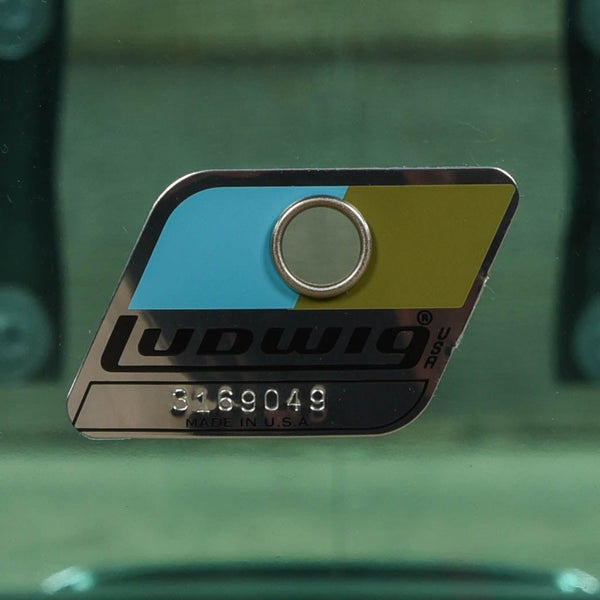Coke Exchange 2025: What’s New and How It Affects Your Sip

Coke Exchange 2025: What’s New and How It Affects Your Sip
The iconic red and white script of Coca-Cola has been a constant in the beverage landscape for generations. Yet, whispers of change have been circulating, and as we move through 2025, these whispers are crystallizing into a tangible shift that promises to redefine your familiar sip. Welcome to the era of Coke Exchange 2025, a pivotal moment where tradition meets a new taste profile, and for Coca-Cola Consolidated, a significant financial restructuring.
The Sweet Revolution: A Return to Cane Sugar
For decades, the familiar sweetness of Coca-Cola in the United States has been primarily derived from High-Fructose Corn Syrup (HFCS). However, a significant pivot is underway. Coca-Cola is reintroducing cane sugar as a primary sweetener in a new iteration of its classic beverage, a move not seen in the US market since the early 1980s. This isn’t just a minor tweak; it’s a homecoming for a taste many remember fondly and a deliberate response to evolving consumer preferences and perhaps even political influence.
Why the Shift?
The rationale behind this significant reformulation is multifaceted:
- Nostalgia and Authenticity: Many consumers express a preference for the taste of Coca-Cola sweetened with cane sugar, often citing the distinct flavor of Mexican Coke, which has consistently used cane sugar. This move aims to capture that sought-after authentic taste.
- Consumer Demand: A growing segment of the population is actively seeking products made with less processed ingredients, and cane sugar fits this narrative for many.
- Industry Trends: The broader food and beverage industry has seen a trend towards natural sweeteners, and Coca-Cola is aligning itself with this movement.
- Reported Influence: Public statements have suggested that political figures have played a role in encouraging Coca-Cola to explore alternatives to HFCS.
What Does This Mean for Your Sip?
The introduction of cane sugar is expected to subtly alter the taste profile of the classic Coca-Cola for those accustomed to HFCS. While both are forms of sugar, cane sugar is often described as having a cleaner, crisper sweetness. The experience is anticipated to be closer to the original, pre-1980s formulation, and importantly, very much in line with the taste of Mexican Coca-Cola. This change is rolling out with a dedicated new product launch, ensuring consumers can experience this difference directly.
Coca-Cola Consolidated: A Stock Split and New Beginnings
Beyond the taste buds, the corporate world of Coca-Cola is also experiencing a significant shake-up. Coca-Cola Consolidated, Inc. (NASDAQ: COKE) has finalized a 10-for-1 stock split of its Common Stock and Class B Common Stock. This financial maneuver, effective on or about May 27, 2025, means that for every share held, shareholders will now have ten.
What is a Stock Split and Why Does It Matter?
A stock split, in essence, divides a company’s existing shares into multiple new shares. This doesn’t change the overall value of the company or a shareholder’s total stake, but it does reduce the price per share.
The Impact of the Stock Split:
- Increased Affordability: A lower share price can make the stock more accessible to a broader range of investors, potentially increasing trading volume and liquidity.
- Perception of Value: While the underlying value remains the same, a lower price per share can sometimes be perceived as more attractive.
Navigating the Exchange: What to Expect
The Coke Exchange 2025 represents a dynamic period for both consumers and investors. Here’s a quick breakdown of what you can anticipate:
| Aspect | Key Change | Potential Impact |
|---|---|---|
| Taste Profile | Reintroduction of cane sugar in a new product. | A potentially crisper, cleaner sweetness. |
| Product Availability | New cane-sugar Coca-Cola launch. | Opportunity to experience a “return to origin” flavor. |
| Cost | Potential for increased pricing (up to 10%). | A slight increase in the cost of your beverage. |
| Coca-Cola Consolidated Stock | 10-for-1 stock split. | Lower price per share, increased accessibility. |
| Sugar Supply Chain | Increased demand for domestic cane sugar. | Potential strain on existing US sugar supply. |
Potential Price Adjustments: The Cost of Sweetness
While the new cane-sugar formulation is being celebrated for its taste, it’s important to note the potential financial implications. Industry analysis suggests that a switch to cane sugar could lead to price increases of up to 10% for Coca-Cola products. This is due to the differing costs associated with sourcing and processing cane sugar compared to HFCS. Consumers may need to budget for a slightly higher cost for their beloved beverage.
The Ripple Effect: Sugar Supplies and the Market
The significant shift in Coca-Cola’s sweetener strategy also has broader economic implications. A heightened demand for domestic cane sugar could potentially upend current sugar supply chains and place pressure on U.S. farmers to meet this increased demand. This could create a ripple effect across the agricultural sector and impact other food and beverage companies that rely on similar ingredients.
Embracing the Change: A New Chapter for Coca-Cola
Coke Exchange 2025 is more than just a product reformulation or a stock split; it’s a strategic evolution for a brand deeply ingrained in global culture. Whether you’re savoring the familiar taste of a classic Coke or watching the financial markets, this year marks a significant transition. The return of cane sugar promises a taste of nostalgia, while the stock split offers a new entry point for investors. As you reach for that familiar red can, know that you’re sipping on a piece of history, reimagined for the future.

Additional Information
Coke Exchange 2025: A New Sip, A Potential Price Hike, and a Splash of Nostalgia
Coca-Cola is poised for a significant shift in 2025, marking a return to a beloved ingredient and potentially altering your wallet and your taste buds. Dubbed “Coke Exchange 2025” by industry observers, the most prominent change is the reintroduction of cane sugar as a primary sweetener in a new Coca-Cola product, aiming to evoke the classic taste enjoyed before the widespread adoption of high-fructose corn syrup (HFCS). This move, coupled with a notable stock split by Coca-Cola Consolidated, Inc. and the specter of price increases, signals a dynamic year for the iconic beverage brand.
What’s New in 2025? The Return of Cane Sugar
The most significant consumer-facing change is the launch of a new Coca-Cola drink sweetened with cane sugar. This is a monumental shift, as cane sugar hasn’t been a staple in Coca-Cola’s primary U.S. recipes since the early 1980s, with many recalling Mexican Coca-Cola, still famously made with cane sugar, as a benchmark for this taste.
- A Taste of Nostalgia: Coca-Cola is explicitly aiming to mirror the taste of Mexican Coca-Cola, a beverage often lauded for its distinct, less cloying sweetness. For consumers who have long sought this “real sugar” taste, this launch offers a chance to experience it directly from the mainstream brand. After 41 years of relying on HFCS, this is a deliberate attempt to capture a segment of the market that prefers the flavor profile associated with cane sugar.
- Targeted Launch: Reports indicate this new cane-sugar-sweetened Coke is slated for a fall 2025 release in the U.S. This strategic timing suggests a desire to capture holiday season sales and capitalize on consumer interest in nostalgic or “authentic” products.
- Political Undercurrents: Interestingly, the announcement of this new drink follows public statements from President Donald Trump, who claimed to have persuaded Coca-Cola to change its recipe and move away from HFCS. While Coca-Cola has confirmed the new release, the extent of political influence versus market demand remains a point of discussion.
How It Affects Your Sip: Taste, Availability, and the Wallet
The implications of these changes for the average Coca-Cola consumer are multifaceted:
- A Different Taste Experience: For those accustomed to the current HFCS-sweetened Coca-Cola, the shift to cane sugar will likely be noticeable. Cane sugar is often described as having a cleaner, brighter sweetness. Some consumers may find this new version more appealing, while others might prefer the established taste of the current formula. It’s essentially a choice being offered, with the new product aiming to satisfy those who remember or prefer the cane sugar era.
- Potential for Two Distinct “Cokes”: It’s important to note that this is a new drink. While the details of whether the existing HFCS-sweetened Coca-Cola will be phased out entirely or continue alongside the cane sugar version are still emerging, consumers may soon have two distinct Coca-Cola options with different sweeteners and, consequently, slightly different taste profiles.
- The Specter of Price Increases: The move to cane sugar is not without its economic considerations. There’s a possibility that consumers might have to pay up to 10% more for Coca-Cola due to this ingredient change. This is partly attributed to the fluctuating costs of sugar versus corn syrup. Furthermore, the increased demand from Coca-Cola could “upend sugar supplies,” potentially driving up prices for other food and beverage companies that also utilize sugar, which could lead to broader price increases across the industry.
- Supply Chain Dynamics: The increased demand for domestic cane sugar could put pressure on U.S. farmers and the existing sugar supply chain. Questions remain about whether U.S. farmers can adequately meet this surge in demand, which could further influence pricing and availability.
A Note on Coca-Cola Consolidated’s Stock Split
While not directly impacting the taste of your Coke, the Coca-Cola Consolidated, Inc. (NASDAQ: COKE) 10-for-1 stock split is a significant financial event for the company. This split, finalized around May 2025, means that for every share of common stock or Class B common stock a shareholder owned, they will now own ten. While this doesn’t change the underlying value of the company, it makes the stock more accessible and potentially more attractive to a wider range of investors by lowering the per-share price. This financial maneuver reflects the company’s operational health and strategic outlook.
In Conclusion: A Sweet and Savory Shift
Coke Exchange 2025 represents a bold move by Coca-Cola, tapping into consumer nostalgia and preferences for “real sugar.” For your sip, this means an opportunity to taste a classic flavor profile reminiscent of earlier eras. However, this revival comes with the potential for a higher price tag and broader implications for sugar supply chains. As Coca-Cola navigates this sweet and savory shift, consumers will be watching – and tasting – to see how this iconic brand continues to evolve.
